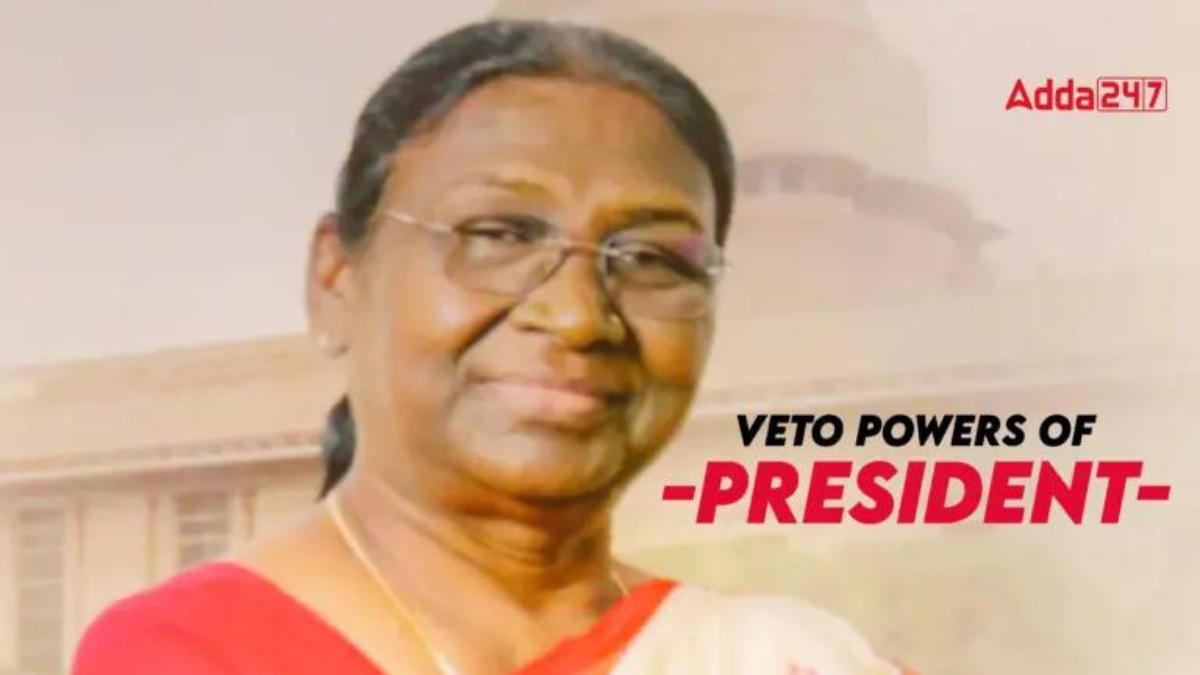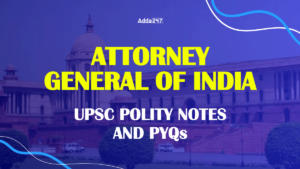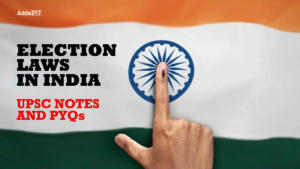Table of Contents
Once a bill is introduced in Parliament, it undergoes the process of approval. Before it transforms into law, it must be submitted to the President of India for his approval. The President holds the authority to either decline, send back, or withhold assent to the bill. This presidential decision on the bill is termed as the “Veto Power”.
Governed by Article 111 of the Indian Constitution, the Veto Power of the President of India holds significance for the IAS Exam across its three stages – Prelims, Mains, and Interview. The concept of Veto Power holds considerable importance for the UPSC Prelims and Mains GS-II examination, particularly within the nation of Political Science.
Veto Power in UN
After World War II, 51 nations established the United Nations (UN) to foster global peace and cooperation. The UN Council comprises 15 members, including 10 non-permanent members elected biennially and 5 permanent members, known as the P5: China, Russia, France, the United States, and the United Kingdom. More info you can check below.
- 51 nations formed the United Nations (UN) after World War II to promote peace and friendship among countries.
- The UN Council has 15 members, including 10 non-permanent members chosen every two years and 5 permanent members known as P5.
- The P5 members are China, Russia, France, the United States, and the United Kingdom.
- Non-permanent members of the UN Council include India, Kenya, Mexico, Tunisia, Vietnam, Norway, Niger, Saint Vincent, Estonia, and the Grenadines.
- Permanent members hold significant power in the UN Council and can veto decisions to protect their countries’ interests.
- There have been 293 vetoes in the UN Council’s history, with Russia and the Soviet Union accounting for 143 of them.
- The United States has used its veto power 83 times, while the United Kingdom has done so approximately 32 times.
- The first veto was exercised on February 16, 1946.
- During emergency sessions of the General Assembly, the veto power cannot be used.
Veto Power of President
The President possesses the same veto authority as UN members. The President of India possesses three veto powers. A bill or resolution becomes an act after it is passed by an assembly, but the president still needs to sign it into law. The President may choose to withhold it, reject it, or return it. These are his three options. The President’s veto authority refers to his ability to choose which legislation to reject. If the President is not in agreement with the bill’s intent, they may choose to exercise their veto power.
| Articles Supporting President’s Veto Power | |
| Article | Description |
| Art 111 | A bill that has been approved by both Houses of Parliament is transmitted to the President for approval. |
| Art 201 | When a Governor reserves a bill for the President’s consideration, the President must indicate whether or not he or she agrees with the bill. |
Situations- President Exercises Veto Power
- Dr. Rajendra Prasad, the country’s first president, used his absolute veto power in 1954 to veto the PEPSU Appropriations Bill.
- R Venkatraman used his absolute veto power over member of parliament salaries and allowances in 1991 to withhold his approval of the bill.
- President Zail Singh used his pocket veto authority in 1986 concerning the Indian Post Office (Amendment) Bill.
- The Office of Profit Bill, 2006, which was enacted by the Parliament, was formally returned by President A. P. J. Abdul Kalam in 2006 as part of his suspensive veto. But after being sent back to the president once more, the bill was eventually approved.
The President has the same three veto rights as regular legislation, but he or she may not always be able to use them all in the case of money or finance laws and bills that would modify the Constitution.
Types of VETO Power
There are three types of veto powers available to the Indian President: suspensive, pocket, and absolute.
1. Absolute veto – It describes the President’s ability to refuse to sign a law that the Parliament has enacted. After that, the bill expires and does not become law. Typically Used in the Two Situations:
- When a private member’s bill is the one that the parliament passes.
- When the president cannot sign the bill into law because the cabinet resigns first. The President may get advice from the incoming government not to sign the legislation that the previous cabinet passed.2
2. Suspensive Veto: This refers to the President returning a bill to the Indian Parliament for further consideration under a suspensive veto. The President must sign the measure without exercising his veto power if the Parliament sends it to him again, amended or not.
About the Money Bill, the President is not permitted to use his suspensive veto power.
3. Pocket Veto: This means that when the president uses his pocket veto, the legislation is delayed indefinitely. He does not return the bill for further review or reject it. The Indian President is not subject to the same time constraints as the US President, who has ten days to return the measure.
Veto authority over State measures: The governor has the authority to hold off on the President’s consideration of a certain category of state legislature-passed measures. Not only in the first instance but also in the second, the President may refuse to sign such measures. As a result, the President has complete control over state legislation (as opposed to a suspensive one). Additionally, the President has the power to veto state legislation using his pocket veto.
| Veto Powers of President | |||
| Type | Ratify | Return | Reject |
| Ordinary Bill | Yes | Yes | Yes |
| Money Bill | Yes | Yes | No |
| The Constitutional Amendment Bill | Yes | No | No |
Effect on State Laws of Veto Powers of President
- A bill passed by the state legislature is only enforceable with the governor of the recognized state’s assent. As per Article 200 of the Indian Constitution, the Governor is endowed with four options:
–To sign the bill with his approval
–Should refuse to sign the law
–Returning the bill for review (assuming it isn’t a cash bill)
–To hold the bill for the President’s consideration
- The bill may be reserved by the governor depending on when any Specific Bill weakens and jeopardizes the authority of the High Court. Under State Legislature-made laws 31A and 31C about estates and property acquisition, which call for the President’s consent.
- The Governor will no longer have any involvement in the measure after it has been reserved for the President’s review. There are three options available to the President when a bill is set aside for his or her consideration: To sign the bill with his approval, refuse to sign the law or order the governor to bring the measure back for review (if it is not a money bill).
The veto is an effective instrument that tackles several significant concerns, whether it is utilized domestically or globally. In contrast to the national veto power, the global veto authority typically addresses security, trade interests, and foreign policy. A veto does not imply that a matter is unimportant; rather, it is a sign of support for a raised problem. A council body of elected members recognizes the importance of the item, even though it has been vetoed for a variety of reasons. They vote both in favour of and against it.
Advantages and Disadvantages of Veto Power
There are differing views regarding the exercise of veto power. Some contend it is an essential check and balance system, while others think it jeopardizes democracy. We will discuss the advantages and disadvantages of veto power as well as how it affects the political system in this part.
Advantages of Veto Powers-
- Prevents rash decisions: One of the veto power’s most significant benefits is its ability to avoid rash decisions. A bill’s effects can be extensive if it is passed without enough thought. The ability to veto legislation ensures that the president or the governor will have enough time to consider and consider the law before reaching a decision.
- Preserve minority interests: Preserving minority interests is another benefit of the veto power. In a democracy, the minority may go unnoticed and the majority frequently has the last say. Nonetheless, it guarantees that the minority’s concerns are taken into consideration by granting the president or the governor the authority to veto legislation.
- Strengthens the division of powers: One crucial element of the division of powers is the veto power. It keeps the legislature from growing too strong and guarantees that the executive branch has a voice in the legislative process.
Disadvantages of Veto Powers-
- Abuse Potential: The ability to abuse the veto power is one of its biggest disadvantages. Legislation that is best for the nation or state may be blocked by veto power held by a president or governor with a personal agenda.
- Postpones the legislative process: Postponing the legislative process is one more drawback of the veto power. A vetoed measure has to be sent back to the legislature for additional consideration, which can take a long time. For lawmakers who are eager to get their legislation passed, this wait can be irritating.
- Last but not least, the veto power has the potential to cause political impasse. Nothing can get done if the governor or president and the legislature cannot agree on important matters. This may harm how well the government runs and aggravate the populace.
The veto authority has two drawbacks. It has substantial disadvantages in addition to some notable benefits. Whether the advantages exceed the disadvantages is ultimately up to the people.



 Attorney General of India UPSC Notes (Ar...
Attorney General of India UPSC Notes (Ar...
 Election Laws in India UPSC Notes
Election Laws in India UPSC Notes
 Indian Parliamentary Forums UPSC Notes
Indian Parliamentary Forums UPSC Notes




